To state the obvious, any business needs a steady flow of customers to survive. All loyal customers or repeat purchasers started out as new customers. But most business owners play it by ear and add new clients without predefined processes or goals. While this may work short term, it could be more sustainable. Customer churn is inevitable regardless of how exceptional your product/service is or how happy your clients are with you.
That’s why businesses need customer acquisition strategies. Developing a well-defined customer acquisition process is crucial for sustainable growth.
In this blog, we’ll explore some of the most effective customer acquisition strategies companies can use to attract and retain customers. From digital marketing to referral programs, we’ll cover a range of techniques you can implement to help your business grow. So, let’s dive in and start exploring the world of customer acquisition!
What is Customer Acquisition?

Customer acquisition refers to attracting, engaging, and converting new customers to your business. It involves identifying potential customers, reaching out to them through various marketing channels, and persuading them to purchase from or engage with your brand.
The goal of customer acquisition is to increase the size of your customer base and grow your business. By creating a strategy around the same, you ensure that your business has a repeatable and systematic way of acquiring and onboarding new customers.
Customer acquisition is not a one-time event. It is, instead, a process that needs to be optimized regularly. As your business and target market evolves, your acquisition strategy should be flexible enough to accommodate these changes. Your strategy could be a mix of media and engagement tools: both online and offline, that engage with your customers in a targeted and timely manner.
4 Stages in Customer Conversion
Before making a purchase, a customer typically goes through various stages. In general, there are four key stages in customer conversion.
Awareness: The first stage is when a customer is aware of a product/service a business offers. This could happen through various marketing activities like advertising, content marketing, or word of mouth.
Consideration: At this stage, the potential customer evaluates different options and considers whether your offering would fit their needs. They would compare your services with competitors and look for reviews or recommendations to aid their decision.
Decision: Once the potential customer has evaluated their options, they make a decision to either purchase your product/service or choose a competitor. This is the stage where businesses must actively persuade prospective clients to choose them through lucrative discounts or outstanding customer service.
Retention: The customer is now a part of your existing client base. Now, you need to focus on retaining the customer by providing exceptional customer support, offering loyalty programs, and continuously working with them to ensure a long-standing customer relationship. A 5% increase in customer retention can lead to a profit increase of up to 25% to 95%.
These stages are often visualized as part of a customer acquisition funnel, which helps businesses optimize the process of converting leads into customers.
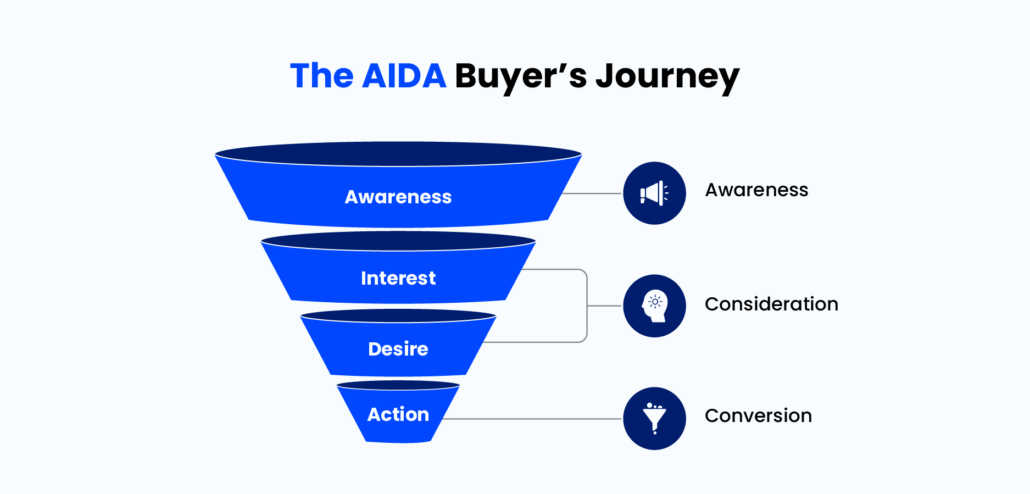
By creating a visual model of your customer acquisition journey, you can easily understand how your customer behaves at each stage. You can then correct shortcomings or double down on activities that work for you, building a sustainable customer acquisition strategy for your business.
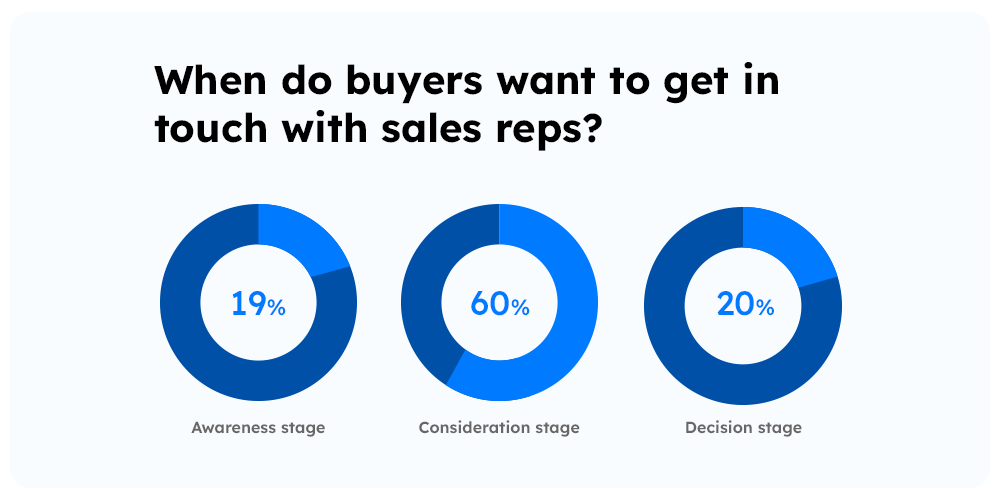
Why is Customer Acquisition Important?
Customer acquisition is the lifeblood of any business. It’s not just about attracting new customers; it’s about driving growth and ensuring long-term success. A robust customer acquisition strategy allows businesses to expand their customer base, increase brand awareness, and ultimately boost revenue. By identifying and targeting the right audience, businesses can create effective marketing campaigns that resonate with potential customers.
This, in turn, enhances competitiveness and market share. Prioritizing customer acquisition efforts ensures that businesses remain relevant and can adapt to changing market dynamics, paving the way for sustained growth and success.
Before you go about improving the customer acquisition cost, you need to know how to calculate it.
How to Calculate Customer Acquisition Cost
To acquire any new customer, some amount of money goes in. By calculating Customer Acquisition Cost (CAC), you will be able to understand the ROI of your various acquisition channels.
To calculate CAC, you can use this simple formula:

For example, if you spent a total of $50,000 in February, and acquired 1000 customers, then your CAC is $100 per customer.
CAC could include various costs like:
- Advertising costs
- Creative costs
- Travel costs
- Employee salaries
- Software costs
- Maintenance costs
By keeping a tight check on where you spend money and how effective each channel is, you can continuously increase your overall acquisition ROI.
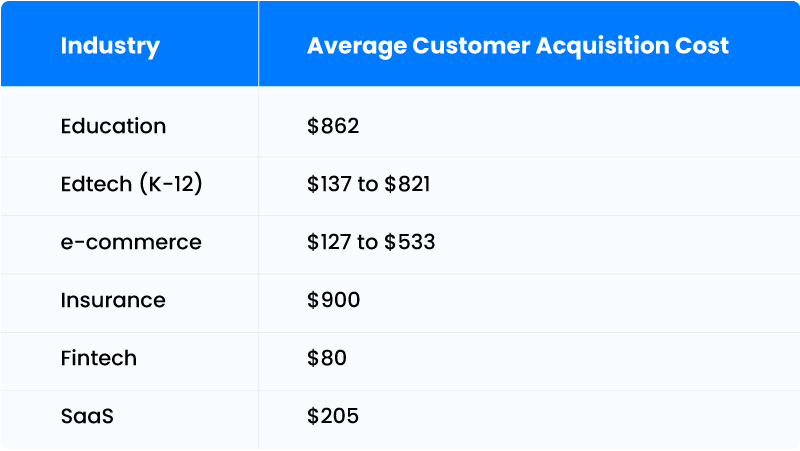
Customer Acquisition Strategies You Must Know in 2024
Businesses can employ numerous customer acquisition tactics to attract new customers. Companies can employ various strategies in their customer acquisition journey. There are multiple online and offline channels that you can utilize to acquire customers for your business. Here, we’ll share a few strategies and customer acquisition examples that help you leverage each channel to its maximum potential.
1. Search Engine Optimization
SEO is a powerful channel that businesses use to attract new customers through search engines like Google, Bing, etc. By optimizing your website to appeal to these search engines, you can rank higher on search engine result pages (SERPs), so your target audience can discover you quickly.
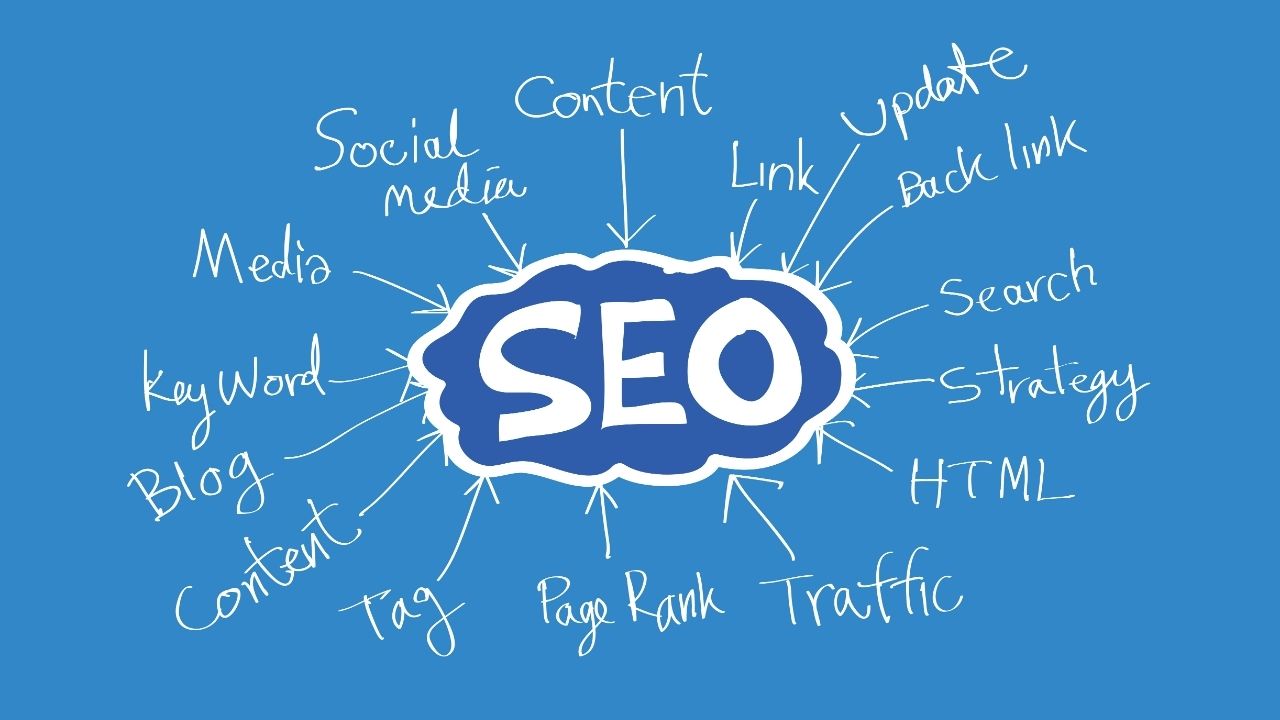
But why is this so important? 75% of people do not scroll past the first page of a search engine. By optimizing your website and content to rank for your target keyword, you are competing for prime online real estate. The importance of SEO as a customer acquisition strategy for startups and other businesses has grown over the last decade.
While content marketing and SEO can be slower in showing results, 49% of marketers report that it has the best ROI of any other marketing channel. Here are some customer acquisition strategies you can leverage to attract new customers:
- Keyword research: Research the phrases or keywords your potential customers use to search for your, or your competitor’s, product/service. You can then optimize your content around these keywords to improve search engine rankings.
- On-page optimization: This involves optimizing the content on your web pages to make them more search-engine friendly. You can optimize meta tags, improve website structure, and ensure that your web pages are mobile-friendly.
- Content creation: Creating high-quality and relevant content is crucial to attracting new customers through SEO. This can include blogs, infographics, videos, and other content that answers customer queries and provides value.
- Link building: It involves acquiring links from other websites back to your website. High-quality, relevant links from authoritative websites can significantly impact your SERP ranking.
- Local SEO: Local SEO helps businesses optimize their website for local queries like ‘Best real-estate company in San Francisco’. You can use a Google My Business listing, create location-specific content, and acquire local links to get your content to rank for a specific region.
SEO is a long-term strategy that requires consistent effort and ongoing optimization to achieve results. But, over time, it can be a highly lucrative, low-cost, and effective way to improve customer acquisition rates.
2. Paid Advertising
Pay-per-click ads are a quick and sure way to attract new leads to your business. Platforms such as Google, Facebook, LinkedIn, Bing, Twitter, etc., provide advertisement services where you can bid for a keyword so that your ad will be shown to a targeted audience and you’ll be billed only if they click on your ad.
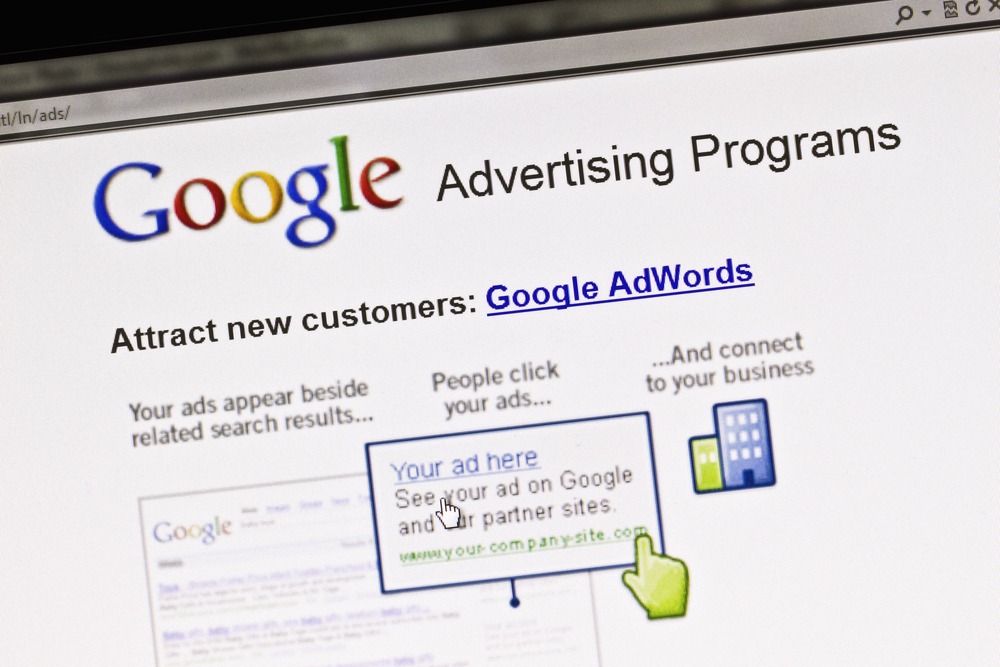
Paid advertising has over a 200% ROI, i,e; businesses can make $2 for every $1 spent, making it one of the best customer acquisition methods. Here are some ways in which you can set up and improve your paid advertising campaign to boost acquisition:
- Define your target audience: Before starting your paid advertising campaign, you need to understand your target audience. This will help you choose the right platform, ad format, and messaging.
- Choose the right platform: There are many platforms you can use for paid advertising, including Google Ads, Facebook Ads, Instagram Ads, and LinkedIn Ads. Choose the platform that your target audience spends the most time on.
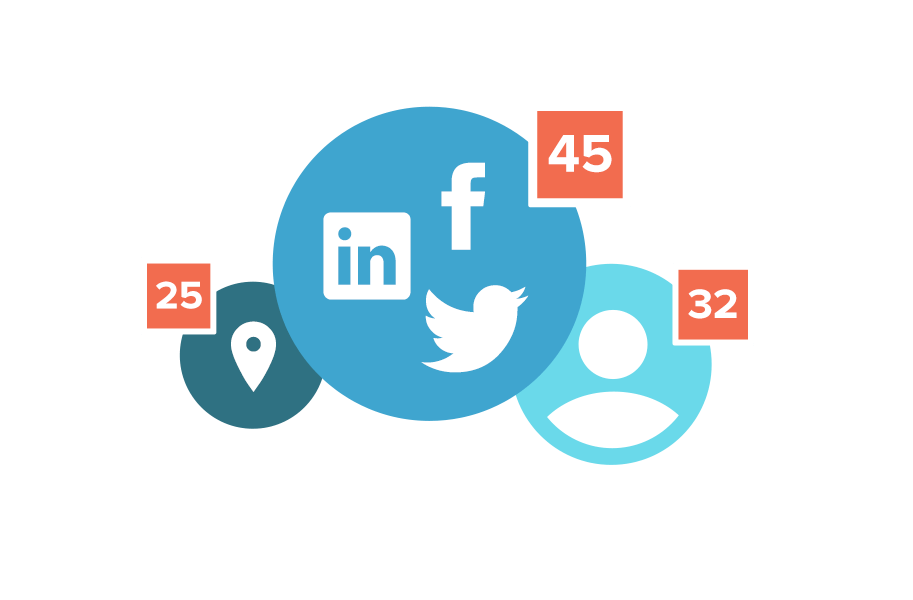
- Set your budget: Determine how much you’re willing to spend on your paid advertising campaign. You can either set a daily or total budget for the campaign’s duration.
- Monitor and adjust: Once your campaign is live, monitor its performance and adjust as needed. This includes tweaking your targeting, messaging, and budget to optimize your results.
- Measure your success: Finally, measure the success of your campaign. Look at metrics like click-through rate, conversion rate, and return on investment (ROI) to determine your campaign’s success.
3. Social Media Marketing
In the age of social media, brands can boost their brand awareness, create an emotional connection, humanize their business, and use it as a distribution channel for their content.

You can adopt two types of social media marketing: organic and paid. Organic social media is when you create free content about your business. This could be educational, or you could capitalize on ‘viral trends’ to better relate to your audience. Paid social media boosts your brand’s visibility by boosting your posts on the chosen platform such as LinkedIn, Instagram, or Facebook.
Here are some customer acquisition strategies that you can employ to make the most of your social media presence:
- Define your target audience: Before creating social media content, ensure you understand who your target audience is. Knowing the demographics of your audience such as age group, gender, and region will help you create content that resonates with your customers.
- Create a social media strategy: Develop a social media strategy that includes the platforms you’ll use, the content you’ll create, and the goals you want to achieve. Make sure your strategy aligns with your business objectives.
- Build a robust social media presence: You must build a solid social media presence to attract new customers. This means regularly posting engaging content, responding to comments and messages, and interacting with your followers. You can then engage with potential customers through social media marketing using Instagram and TikTok hacks.
- Use social media advertising: Social media advertising can be a cost-effective way to reach new customers. Consider running ads that target your desired audience based on demographics, interests, and behaviors.
- Offer incentives: Consider offering exclusive discounts or promotions to your social media followers. This can be a great way to encourage them to make a purchase and can help you acquire new customers.
- Leverage user-generated content: Encourage your followers to share photos or videos of them using your product or service. This user-generated content can be a powerful way to attract new customers and build social proof.
- Track your results: Make sure you track your social media marketing efforts to see what’s working and what’s not. Use analytics to measure your reach, engagement, and conversion rates, and use this data to optimize your strategy.
4. Email Marketing
Who said email is dead? 81% of marketers still use email as their primary customer acquisition channel. Email marketing can be one of your most profitable channels when done correctly. Here are some tips on creating an effective email marketing strategy:
- Build a high-quality email list: A high-quality email list is vital to successful email marketing. Ensure you collect email addresses from interested and engaged individuals likely to be interested in your products or services.
- Segment your email list: Segment your email list based on different criteria, such as demographics, interests, and behavior. This allows you to send targeted and relevant emails to specific audience segments.
- Craft engaging subject lines: The subject line is the first thing a recipient sees in their inbox, so make it count. Use engaging and attention-grabbing subject lines to increase your open rates.
- Personalize your emails: Personalize emails by including the recipient’s name and other information based on their previous behavior or interests. This helps to make the recipient feel valued and increases their chances of taking action.
- Create valuable content: The content of your emails should be informative, functional, and practical to the recipient. Offer exclusive content, promotions, and other incentives to encourage them to take action.
- Test and optimize: A/B test your emails to see what works best and optimize your emails based on the results. Test different subject lines, email designs, and calls to action to see what drives the best results.
5. Content Marketing Efforts
Content marketing is a cornerstone of a successful customer acquisition strategy. It involves creating and distributing valuable, relevant, and consistent content to attract and engage a clearly defined audience. This can take many forms, including blog posts, videos, social media updates, and more. The primary goal is to build trust and credibility with potential customers, positioning your business as a thought leader in your industry.
High-quality content that addresses the needs and pain points of your target audience can drive traffic, increase brand awareness, and ultimately lead to conversions. By leveraging content marketing, businesses can enhance their customer acquisition efforts and attract new customers organically.
6. Referral Marketing
Referral marketing leverages the power of word-of-mouth to acquire new customers. By encouraging satisfied customers to refer friends and family, businesses can tap into a trusted network of potential customers. This strategy often involves offering incentives, such as discounts or rewards, to motivate existing customers to make referrals.

Exceptional customer service can also inspire loyalty and advocacy, leading to organic referrals. Referral marketing is highly effective because it builds on the trust and credibility established by existing customers. Implementing a referral program can significantly boost word-of-mouth marketing, improve customer retention, and reduce customer acquisition costs, making it a powerful tool in your customer acquisition strategy.
7. Events and Sponsorships

Attending events or trade shows that your target audience frequents can be a fantastic way of interacting with prospects and improving your brand recall. Here are some types of events you can consider participating in to attract new customers:
- Trade shows and expos: Attend relevant trade shows and expos to showcase your products or services and network with potential customers.
- Product launches: Host an event to launch a new product or service and invite potential customers to attend.
- Open houses: Invite customers to visit your business and tour your facilities. Offer them a chance to try your products or services and speak with your staff.
- Workshops and seminars: Offer workshops and seminars on topics relevant to your business or industry. This can help establish you as an authority in your field and attract potential customers.
- Webinars: Host a live or pre-recorded webinar to showcase your expertise, products, or services. This can be an effective way to reach a wider audience.
- Networking events: Attend networking events to meet potential customers and establish relationships with other professionals in your industry.
- Contests and giveaways: Host a contest or giveaway to generate interest in your products or services and attract potential customers.
- Customer appreciation events: You can invite your existing customer to get-togethers where you understand if they’re facing any challenges and encourage them to refer others to your business. Doing so may increase customer loyalty and customer lifetime value, while opening up opportunities to cross-sell or up-sell your offerings.
- Community events: Sponsor or participate in local community events, such as festivals or charity events, to increase your brand visibility and connect with potential customers in your area.
8. Traditional Advertising

If you have the budget and reach for it, you can employ traditional advertising methods to acquire new clients. For example, strategically placed billboards and signs can increase footfall into your office if you are a real estate business. Here are some traditional channels you can consider for your business:
- Print advertising: This includes ads in newspapers, magazines, and direct mail. Print advertising can be targeted to specific demographics and effectively reach potential offline customers.
- Outdoor advertising: Includes billboards, bus ads, and other types of outdoor advertising. Outdoor advertising can be effective in areas with high foot or vehicle traffic.
- Radio advertising: Radio ads can reach a specific audience based on demographics or interests. They are particularly effective for local businesses.
- Television advertising: Television ads can be expensive, but they can reach a large audience and be used to build brand awareness.
Track key performance indicators (KPIs) such as conversion rates, customer acquisition cost (CAC), and customer lifetime value (CLV) to evaluate the success of your strategies.
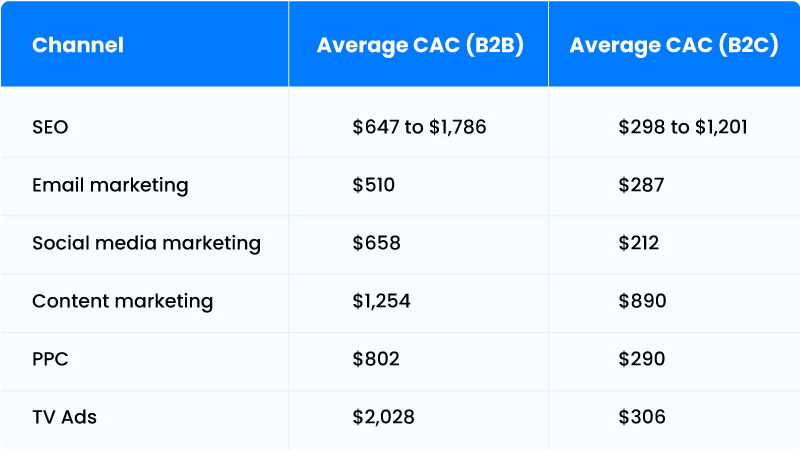
How to find the best customer acquisition strategy for your business?
An effective customer acquisition strategy helps businesses reach their target audience, convince them to try their products or services, and ultimately convert them into paying customers. For a truly effective customer acquisition strategy, you need to constantly research, test, iterate, and optimize.
There are many different customer acquisition methods. One thing is for sure: acquiring customers takes many teams to move people through each stage.
The best B2B customer acquisition strategy is a tailored approach that considers your unique business, target audience, and budget. Here’s how to find the sweet spot for your customer acquisition:
- Know your ideal customer: In-depth customer research is crucial. This includes understanding your target audience’s demographics, online behavior, pain points, and preferred communication channels. This knowledge shapes the strategies that will resonate most effectively.
- Analyze existing data: Look at your existing customer acquisition efforts. What channels are generating the most leads and sales? Identify strengths and weaknesses to optimize your approach. It is also important to measure customer acquisition by evaluating metrics such as customer acquisition cost (CAC) and conversion rates.
- Explore industry trends: Stay updated on industry trends in customer acquisition. What marketing tactics are your competitors using? Look for successful strategies that might be adaptable to your business model.
- Experiment and analyze: Don’t be afraid to experiment! Test different channels, content formats, and messaging techniques to see what drives the best results. Track key metrics like cost-per-acquisition (CPA) and conversion rates to identify the most successful strategies for your business.
- Refine and Repeat: Customer acquisition is an ongoing process. As you gather data and experiment, refine your strategies to maximize their effectiveness. The best approach is one that constantly evolves and adapts based on your learnings.
Customer Acquisition Strategy Examples
Customer acquisition strategies come alive when you see them in action. Let’s delve into three inspiring examples from LeadSquared’s case studies that showcase how businesses across industries can attract new customers:
1. Education on Autopilot: Erie Institute of Technology
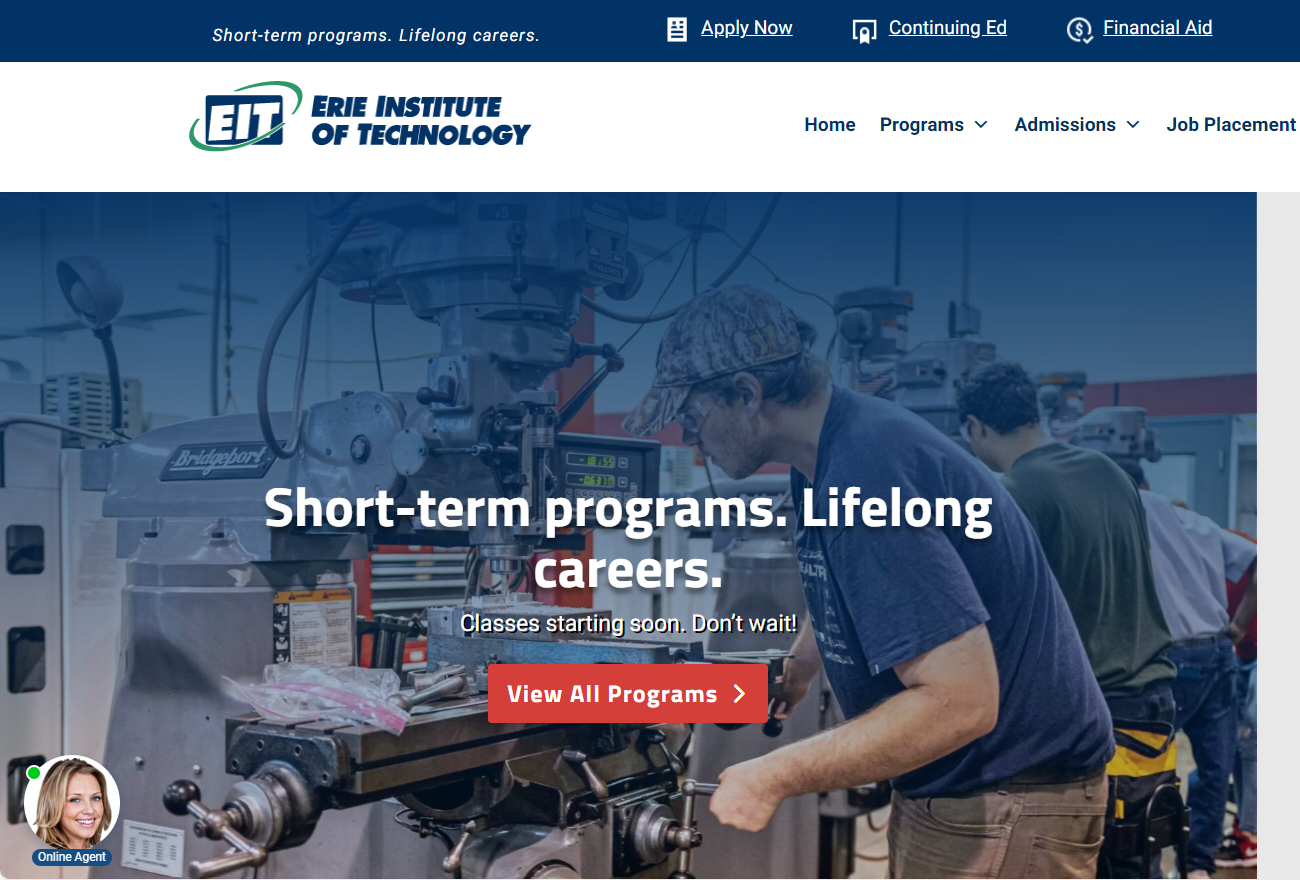
In the competitive world of higher education, Erie Institute of Technology (Erie IT) faced the challenge of streamlining its admissions process and attracting new students. Their solution? LeadSquared’s Education CRM.
By implementing the CRM, Erie IT automated lead capture forms, nurtured leads with targeted email campaigns, and gained valuable insights into student behavior. This allowed them to personalize outreach and convert more inquiries into enrollments.
LeadSquared’s reporting features provided Erie IT with real-time data on campaign performance, enabling them to optimize their strategy and maximize their return on investment (ROI).
2. From Leads to Loyal Patients: Tandem Care
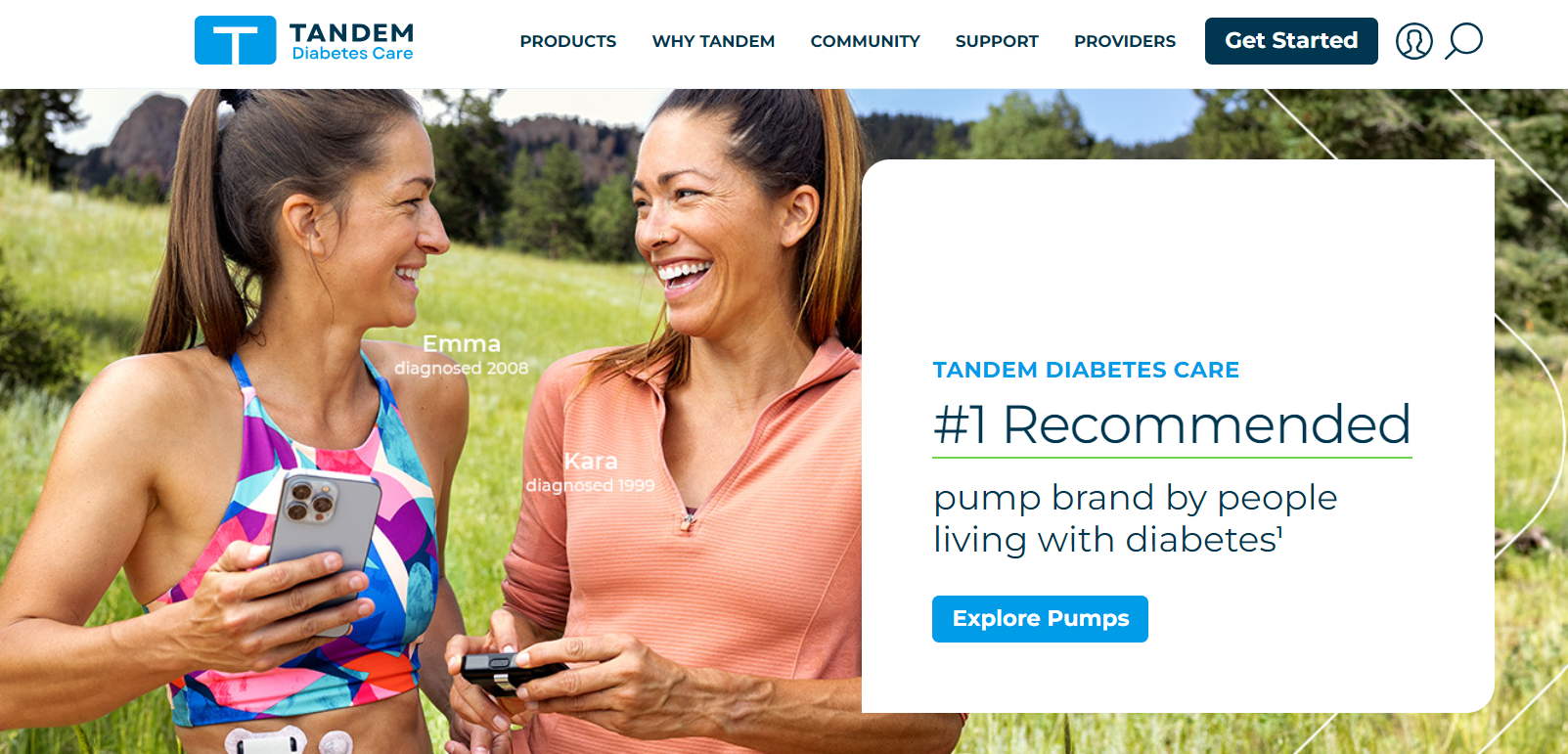
Tandem Care, a leading healthcare provider, sought to improve responsiveness and communication with patients to enhance their caregiving experience. This, in turn, would fuel patient loyalty and attract new referrals. Their answer was LeadSquared’s automation capabilities.
By automating tasks like appointment reminders and follow-up emails, Tandem Care freed up their staff to focus on patient interaction. LeadSquared’s real-time reporting also empowered them to track patient satisfaction and identify areas for improvement.
This data-driven approach allowed Tandem Care to personalize communication and provide a superior patient experience, ultimately leading to increased patient retention and a stronger pipeline of new referrals.
3. Real Estate Reinvented: A Conversion Success Story
The fast-paced world of real estate demands a dynamic and data-driven approach to customer acquisition. A leading real estate enterprise leveraged LeadSquared’s powerful features to achieve a remarkable 250% increase in conversions. The secret sauce? LeadSquared’s smart views provided real-time insights into the lead journey, enabling targeted communication and personalized offers.
Additionally, the automation features streamlined internal processes, ensuring no leads slipped through the cracks. With better visibility and efficient workflows, the sales team could focus on converting high-potential leads, resulting in a significant boost in their conversion rate.
These real-world examples demonstrate the power of choosing the right SaaS customer acquisition strategy. By aligning your approach with your industry, target audience, and budget, you can attract new customers, nurture leads, and build a thriving business.
Conclusion
As mentioned at the beginning of this blog, customer acquisition is crucial to a business’s success. To effectively acquire new customers, it’s essential to employ various customer acquisition strategies that align with your business goals, target audience, and budget.
Ultimately, the key to successful customer acquisition is understanding your target audience, being flexible in your approach, and constantly measuring and analyzing your results to refine your strategy over time. By implementing a well-rounded customer acquisition strategy, you can attract and retain customers, drive growth and revenue, and ultimately achieve long-term success for your business.
But, to measure your lead inflow from your various acquisition channels and the ROI associated with each, you need a lead management and sales enablement tool like LeadSquared. To know more about how LeadSquared can help track your leads and help you in your journey to closing new customers, you can get in touch.
FAQs
1. What is a customer acquisition strategy?
A customer acquisition strategy is a roadmap for attracting new customers to your business. You need to identify your ideal customer, choose the right marketing channels, and craft compelling messages to convert leads into paying customers.
2. How do you calculate Customer Acquisition Cost (CAC)?
Divide your total customer acquisition spending (marketing, sales) by the number of customers acquired in that period. (CAC = Total Customer Acquisition Cost / Number of Customers Acquired)
3. What are some effective customer acquisition channels?
Many channels can be effective, depending on your business and target audience. Here are a few popular options:
i) Content marketing
ii) Social media marketing
iii) Search engine optimization (SEO)
iv) Paid advertising
4. How can businesses reduce their Customer Acquisition Cost (CAC)?
There are several ways to reduce CAC:
i) Focus on customer retention
ii) Optimize your marketing campaigns
iii) Automate tasks
iv) Refine your targeting









